Home Remedies for Treatment of Anemia
What is Anemia
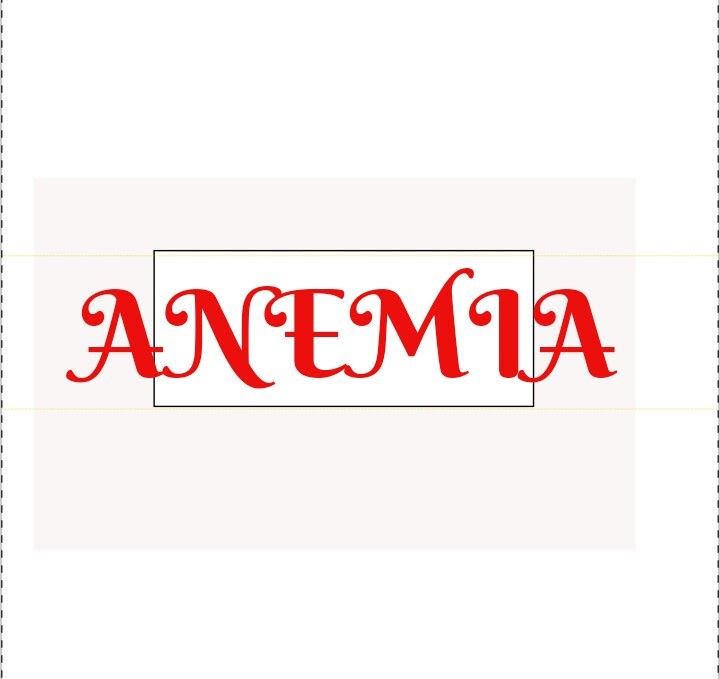
image one
Anemia is a blood disorder characterized by the reduction in
RBCs
Hemoglobin content
Packed cell volume
That is , anemia develops when your blood lacks enough healthy red blood cells or hemoglobin. Hemoglobin is the main part of your red blood cells and binds oxygen.
Anemia occurs because of
Decreased production of Red Blood cell
Increased destruction of Red Blood Cell or
Excess loss of blood from the body, all these incidents are caused either by inherited disorder or environmental influence such as nutritional problem, infections and exposure to drugs or toxins
CAUSES OF ANEMIA
- Hemorrhagic Anemia

Hemorrhagic anemia refers to excessive loss of blood. Anemia due to hemorrhage occurs in both acute and chronic hemorrhagic conditions.
ACUTE HEMORRHAGE : This refers to a sudden loss of a large quantity of blood as in the case of accident. The plasma portion of the blood is replaced within 24hours, the replacement of Red Blood cells does not occur quickly and it takes at least 4-6 weeks to be corrected. However, with less number of Red Blood cells hemodilution ( an increase in the fluid content of blood and thus a diminution of the number of cells) occurs .
CHRONIC HEMORRHAGE :This refers to as the loss of blood by internal or external bleeding over a long period of time. It occurs in conditions like gastrointestinal conditions such as ulcer (Peptic ulcer), hemorrhoids, gastritis ( Inflammation of the stomach), and cancer, purpura ( the appearance of red or purple discoloration on the skin that do not blanch when pressure is applied, caused by internal bleeding), hemophilia ( hereditary illness that impairs the body's ability to control bleeding, it is usually passed from mother to son) and menorrhagia ( excessive menstrual bleeding flow that lasts longer than seven days and it requires a woman to change her pad or tempon every 2 hours or more.
- Hemolytic Anemia
This is due to excessive hemolysis (hemolysis is the rupturing of RBCs and the release of their content ''cytoplasm'' into surrounding fluid example blood plasma) which is not compensated by increased RBC production by the bone marrow . Hemolytic Anemia can be intrinsic or extrinsic
EXTRINSIC HEMOLYTIC ANEMIA : It is the type of anemia caused by destruction of RBCs by external factors. The healthy red blood cells are hemolized by factors outside the blood cells such as antibodies, chemicals and drugs. The common causes of hemolytic anemia are :
Liver failure
Renal disorder
Hypersplenism
Burns
Infections like malaria , hepatitis and septicemia
Drugs such as penicillin, anti-malarial drugs and sulfa drugs
Leukemia
Lymphoma ( tumors)
Poisoning by chemical substances like lead, coal, and tar
Presence of Isoagglutinins like anti Rh
Autoimmune diseases such as rheumatoid arthritis and ulcerative colitis .
INTRINSIC HEMOLYTIC ANEMIA : It is the type of anemia caused by the destruction of RBCs because of the defective RBCs . This condition is often inherited such as in people with sickel cell anemia or thalassemia
Sickle Cell Anemia
Sickle Cell Anemia is an inherited blood disorder characterized by the sickle shaped RBCs. This is due to the abnormal hemoglobin called hemoglobin S ( sickle cell hemoglobin). In this α chains are normal and β chains are abnormal. Sickle cell anemia occurs when a person inherits two abnormal genes ( one from each parents)
Thalassemia
Thalassemia is a group of of inherited disorders, characterized by abnormal hemoglobin
3.Nutition Deficiency Anemia
Nutrition Deficiency Anemia occurs due to deficiency of nutritive substances necessary for erythropoiesis .These substances necessary for erythropoiesis are irons, proteins and vitamins like vitamin C , B¹² and folic acid . This type of nutrition deficiency anemia are:
Iron Deficiency Anemia
Protein Deficiency Anemia
Pernicious Anemia or Addison's Anemia ( deficiency of vitamin B¹² )
Megaloblastic Anemia ( deficiency of folic acid)
Aplastic Anemia
This is due to the disorder of Red Bone Marrow. This red bone marrow is reduced and replaced by fatty tissues. Bone marrow disorder occurs in the following conditions :
I. Repeated exposure to X-ray or gamma ray radiation
II. Presence of bacteria toxins, quinine, gold salts, benzene, radium and so on...
III. Tuberculosis
IV. Viral infections like hepatitis and HIV infections. In Aplastic anemia, the RBCs are normocytic and normochromic.Anemia of Chronic Diseases
This is the second most common type of anemia. It is characterized by the short life span of the RBCs, caused by disturbances in iron metabolism or resistance to erythropoietin action. Anemia develops after a few months of sustained disease. The RBCs are normocytic and normochromic. Common causes of this anemia are :
I. Non-infectious inflammatory diseases such as rheumatoid arthritis
II. Chronic infections like tuberculosis and abscess in lungs.
Neoplastic disorders such as Hodgkin's disease and cancer of the lungs and breast
SIGNS AND SYMPTOMS OF ANEMIA
- skin
The colour of the skin became pale. The paleness is most constant and prominent in buccal and pharyngeal mucous membrane, conjunctivae, lips, ear, lobes, palm and nail bed.
Skin becomes thin and dry, loosing the elasticity. Thining, loss and early grayness of hair occur. The nails becomes brittle and easily breakable . - There's increase in heart rate ( tachycardia) and cardiac output. Heart is dilated and cardiac murmur are produced . The velocity of blood flow is increased
- Respiration
There's an increase in the rate and force of respiration. Sometimes it leads to breathlessness and dyspnea (difficulty in breathing). Oxygen hemoglobin dissociation curve is shifted to right - Digestion
Anorexia nausea, vomiting, abdominal discomfort and constipation are common - Basal metabolic rate increases in several anemia.
- Renal function is disturbed. Albuminuria is common
- In females , the menstrual cycle is disturbed
- Headache, lack of concentration, restlessness, irritability, drowsiness, dizziness or vertigo especially when standing, increased sensitivity to cold and fainting sensation. Muscles becomes weak and the patient feels lack of energy and fatigued quite often and quite easily.
Treatment of Anemia
Anemia treatment depends on the cause.
Iron deficiency anemia: Treatment for this form of anemia usually involves taking iron supplements and making changes to your diet.
If the underlying cause of iron deficiency is loss of blood — other than from menstruation — the source of the bleeding must be located and stopped. This may involve surgery. Please Consult your doctor first
Vitamin deficiency anemias: Treatment for folic acid and B-12 deficiency involves dietary supplements and increasing these nutrients in your diet.
If your digestive system has trouble absorbing vitamin B-12 from the food you eat, you may need vitamin B-12 shots. At first, you may receive the shots every other day. Eventually, you'll need shots just once a month, which may continue for life, depending on your situation.
Anemia of chronic disease: There's no specific treatment for this type of anemia. Doctors focus on treating the underlying disease. If symptoms become severe, a blood transfusion or injections of synthetic erythropoietin, a hormone normally produced by your kidneys, may help stimulate red blood cell production and ease fatigue.
Aplastic anemia: Treatment for this anemia may include blood transfusions to boost levels of red blood cells. You may need a bone marrow transplant if your bone marrow is diseased and can't make healthy blood cells.
Anemias associated with bone marrow disease. Treatment of these various diseases can include medication, chemotherapy or bone marrow transplantation.
Hemolytic anemias: Managing hemolytic anemias includes avoiding suspect medications, treating related infections and taking drugs that suppress your immune system, which may be attacking your red blood cells.
Depending on the severity of your anemia, a blood transfusion or plasmapheresis may be necessary. Plasmapheresis is a type of blood-filtering procedure. In certain cases, removal of the spleen can be helpful.
Sickle cell anemia: Treatment for this anemia may include the administration of oxygen, pain-relieving drugs, and oral and intravenous fluids to reduce pain and prevent complications. Doctors also may recommend blood transfusions, folic acid supplements and antibiotics.
A bone marrow transplant may be an effective treatment in some circumstances. A cancer drug called hydroxyurea (Droxia, Hydrea) also is used to treat sickle cell anemia.
Thalassemia. This anemia may be treated with blood transfusions, folic acid supplements, medication, removal of the spleen (splenectomy), or a blood and bone marrow stem cell transplant.
HOMEMADE REMEDIES FOR TREATMENT OF ANEMIA
Anemia can be treated and managed with a little care and caution.
If you have anemia, the first step would be to ''talk to your doctor'' about taking iron supplements and also enrich your diet with iron-rich foods.
Here’s where I can help. I've put together some of the best home remedies for anemia that can help boost your energy and restore your vitality.
1.Increase Vitamin C intake
Anemia tends to weaken your immune system and thus, you may be more prone to infections and inflammatory diseases. Adequate doses of Vitamin C can help fortify you from within and at the same time it also helps in the absorption of iron. Dote on oranges or you can even have a glass of lemon water every day.
2.Yogurt with Turmeric
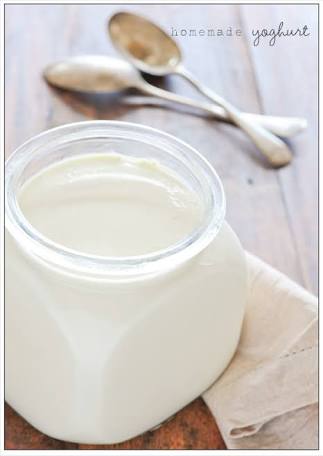.jpg)
image source
Those suffering from kapha-type anemia should have a cup of yogurt twice a day, morning and afternoon, with a teaspoon of turmeric. In kapha-type anemia, a person may experience swelling and the skin turns cold and clammy. This remedy helps in balancing the kapha dosha in the body.
3.Eat more green vegetables
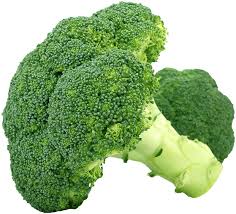.jpg)
image source
The high amounts of chlorophyll contained in green vegetables like spinach, celery, mustard greens and broccoli is a good source of iron. Keep in mind that it's best to have cooked spinach as raw the leaves contain oxalic acid with may prevent the absorption of iron in the body.
How to prepare Spinach

image source
A diet rich in green leafy vegetables like spinach is one of the best home cures for anemia.
Spinach is rich in iron as well as vitamin B12 and folic acid, energy-boosting nutrients that the body needs to recover from anemia.
A one-half cup of spinach provides almost 35 percent of your daily value of iron and 33 percent of your daily value of folic acid.
Drink spinach soup twice daily.
To prepare the soup, take 1 cup of blanched spinach and puree it by adding a little water. Heat 1 teaspoon of extra-virgin olive oil in a pan, sauté some chopped garlic cloves and onion in it until brown. Add the pureed spinach and a little salt and cook on low heat for 5 – 10 minutes.
Mix two teaspoons of honey in a glass of fresh spinach juice. Drink this once daily.
Follow either of these remedies for at least one month
4.Making Beetroot and pomegranate juice
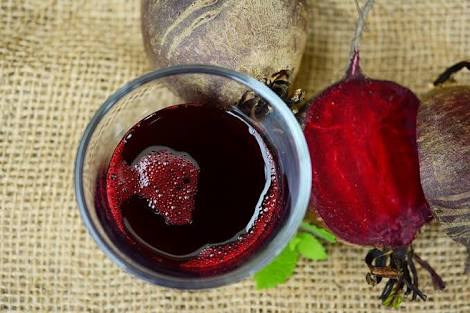.jpg)
image source
And
.jpg)
image source
Fresh beetroot and pomegranate juice acts as great blood builders and also blood purifiers. Beetroots are rich in folic acid you can team them up with apples or carrot.
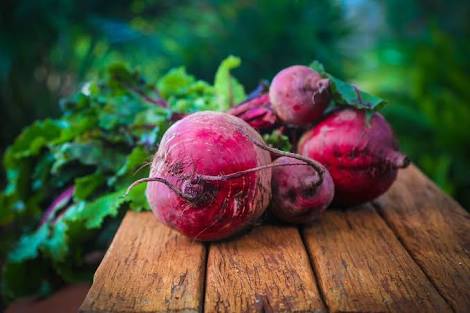.jpg)
image source
In addition to providing nutrition, beetroot helps cleanse the body and supply more oxygen throughout the body. This in turn helps increase the body’s red blood cell count.
Blend one medium-size beetroot, three carrots and one-half of a sweet potato in a juicer. Drink this juice once daily.
You can also eat beetroots as a cooked vegetable or in a salad. Eat the peel along with the beetroot for maximum nutritional value.
Pomegranate
.jpg)
Image source
Pomegranate on the other hand is rich in iron and other minerals, such as calcium and magnesium. It also contains vitamin C, which helps improve the body’s absorption of iron. This results in more red blood cells and an increase in the hemoglobin level.
How to prepare
Mix one cup of pomegranate juice, one-fourth teaspoon of cinnamon powder and two teaspoons of honey. Drink this daily with your breakfast.
Alternatively, take two teaspoons of dried pomegranate seed powder with a glass of warm milk one or two times daily.
You can also eat a medium-size pomegranate every morning on an empty stomach.
5.Copper water
.jpg)
image source
Have water stored in a copper vessel overnight every morning. This helps in replenishing your body with natural minerals and is also known to be very good for treating hair loss.
6.Sesame seeds
.jpg)
image source
Eating sesame seeds is another great way of increasing your iron intake, especially black sesame seeds.They are also great for treating anemia due to their high iron content. One-fourth cup of sesame seeds provides almost 30 percent of the daily iron requirement.
Soak two tablespoons of black sesame seeds in water for two to three hours. Strain and make a paste of the soaked seeds. Add one tablespoon of honey and mix well. Have this mixture twice daily.
Soak one teaspoon of black sesame seeds in warm water for two hours. Grind the mixture into a paste and then strain it to get the emulsion. Mix the emulsion in a cup of warm milk, add honey or jaggery and drink it once daily.
7.Raisins and dates
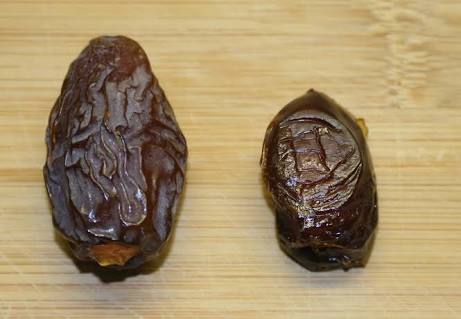.jpg)
image source
These dried fruits offer a combination of iron and Vitamin C. This enables the body to quickly and effectively absorb the iron from them. Eat a handful of raisins and one or two dates for breakfast or as a mid-meal snack. They are also know to give you instant energy.
Dates
Dates are a rich source of iron as well as vitamin C that plays an important role in the body’s absorption of iron.
Soak two dates in a cup of milk overnight. The next morning, eat the dates and drink the milk on an empty stomach.
Alternatively, you can eat some dry dates on an empty stomach in the morning, followed by a cup of warm milk.
8.Blackstrap Molasses
.jpg)
image source
Blackstrap molasses is considered a nutritional powerhouse, especially for those who are anemic.
It is a good source of iron, B vitamins and other essential minerals that help increase red blood cell production. A tablespoon of blackstrap molasses supplies almost 15 percent of your daily iron needs.
Mix one tablespoon of blackstrap molasses in a cup of hot water or milk. Drink this once or twice daily. This drink is highly beneficial for pregnant women.
Another option is to combine two teaspoons each of blackstrap molasses and apple cider vinegar in one cup of water. Drink this once daily.
9.Apple
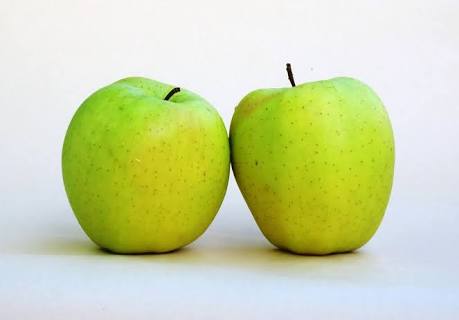.jpg)
image source
Being rich in nutrients including iron, apples help a lot in treating anemia.
Eat at least one apple daily. If possible, opt for green apples and eat them with their skin.
You can also mix equal parts of fresh apple juice and beetroot juice and a little honey. Drink this juice twice daily.
10.Banana
.jpg)
image source
High in iron, banana stimulates the production of hemoglobin and many other enzymes that are essential for the formation of red blood cells. Also, it is a good source of magnesium that aids in hemoglobin synthesis.
Eat one ripe banana along with one tablespoon of honey twice daily.
Alternatively, mix one mashed ripe banana and one tablespoon of Indian gooseberry (amla) juice. Eat this two or three times daily.
11.Dried Black Currant
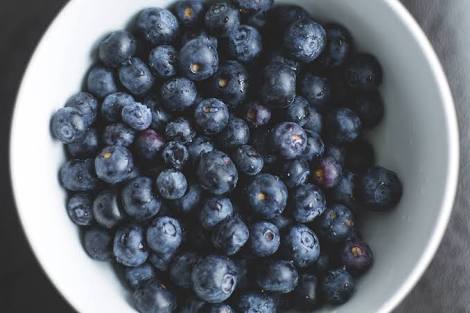.jpg)
image source
Due to its high concentrations of iron and vitamin C, dried black currant has been found to be a very effective treatment for anemia. Vitamin C enhances the body’s ability to absorb the iron, increasing red blood cells and hemoglobin.
I. Soak 10 to 12 dried black currants in water overnight.
II. The next morning, remove them from the water and remove the seeds.
III. Eat them daily before eating your breakfast.
IV. Follow this remedy for a few weeks.
12.Fenugreek
.jpg)
image source
The high iron content in fenugreek will help maintain the iron in your blood. It also aids new red blood cell production. Both the leaves and seeds of fenugreek can be used in the treatment of anemia.
How to prepare
Cook one cup of rice with two teaspoons of fenugreek seeds. Add some salt and eat it once daily for at least two to three weeks.
You can also use fenugreek leaves in your cooking, especially in soups or salads.
These home remedies are great for restoring a healthy red blood cell count in people who have anemia. Following a well-balanced diet is essential to prevent a recurrence.
Tips to Prevent Anemia
Take cold baths twice daily to improve blood circulation.
Cook your food in iron pots to get increased iron content.
Expose your body to early morning sunlight for 10 minutes daily.
Include lentils and whole grain cereals in your diet.
Include more fresh fruits and vegetables in your diet.
Enjoy a warm water bath mixed with Epsom salt a few times a week.
Exercise regularly and include some strength training to increase muscle mass and fight fatigue.
Eat plenty of iron-rich foods, such as tofu, green and leafy vegetables, lean red meat, lentils, beans and iron-fortified cereals and breads.
Eat and drink vitamin C-rich foods and drinks.
Avoid drinking tea or coffee with your meals, as they can affect iron absorption.
Get enough vitamin B12 and folic acid in your diet.
image one designed by me
.jpg)
Hi, I just followed you :-) Follow back and we can help each other succeed! @hatu
But you didn't upvote the post🤔
😂😂😂😂
Boifiok leave someones son alone ni 😂😂
Hahhahahahaahhahah can't stop laughing
You have u liked??
And there is upvoting button oh
Cathy ..😂😂
Thisis doctor's prescription for a lifetime 😂😂
See length 😂😂😂😂😂😂
Award winning post
😂😂😂
Lol,
You did a good job with your wonderful on such an important sickness.
Thank you
You are most welcome
This post is [email protected] now a big fan, expect more of me in your blog...
Smiles... thanks